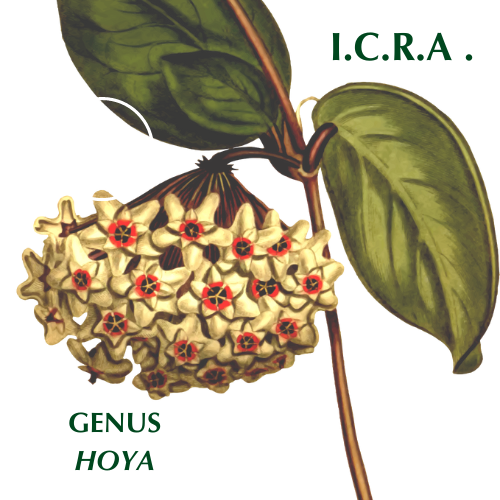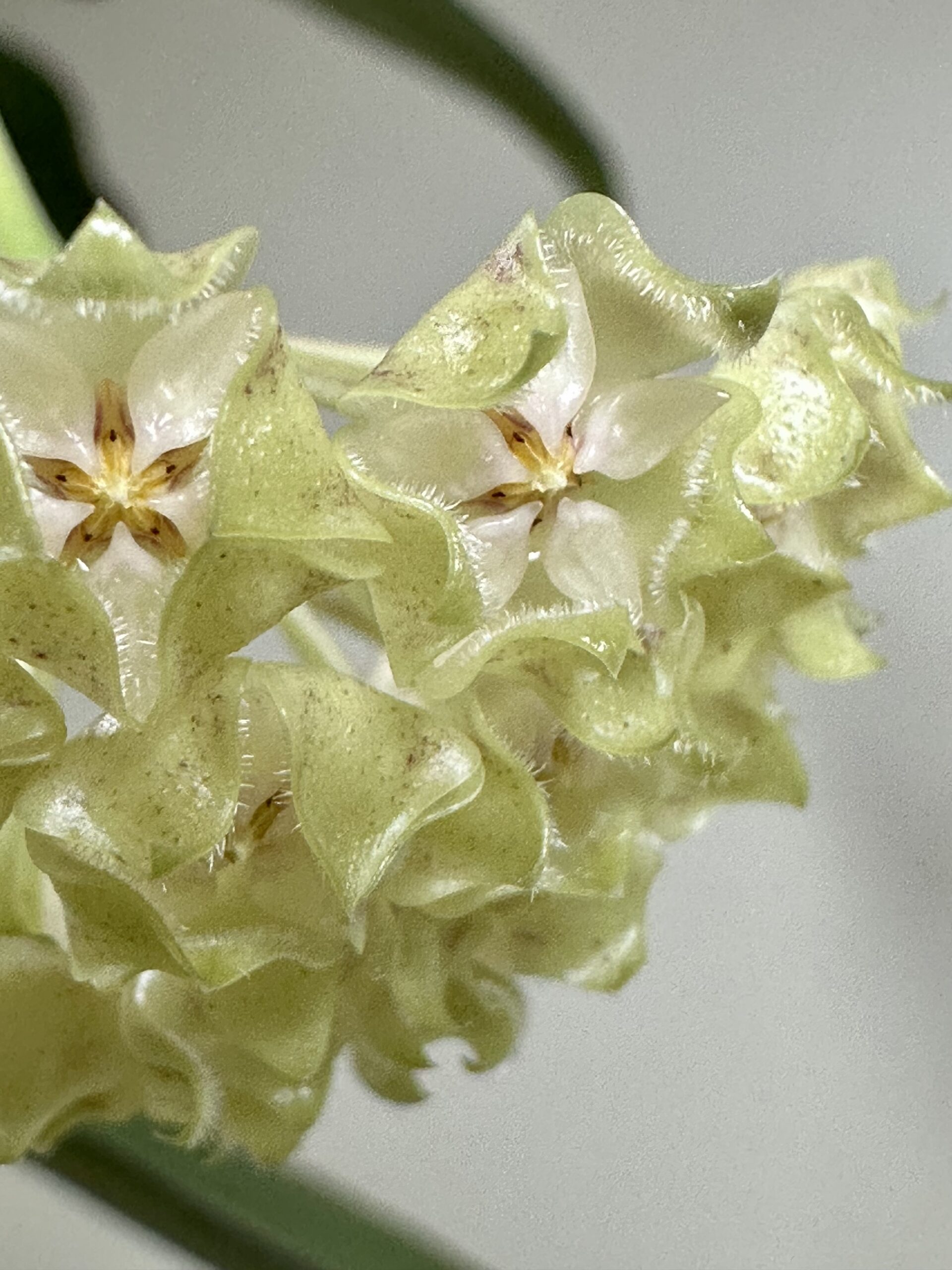Full Name: Hoya carnosa ‘Exotica’
Status: Accepted and established with a full print description prior to 1959, by Schaffer’s Tropicals for Indoor Planting (1952), which is why the Latin is permitted in this particular case (21.6 Brickell et al.).
(1952).Exotic Tropical House Plants. Schaffer’s Tropicals for Indoor Planting. Clearwater, Florida,U.S.A. Schaffer Nurseries. “We are offering this for the first time. Has fleshy, waxy leaves. Leaves predominantly white, edged irregularly with two shades of light green. Leaves slightly ruffled. Truly exotic as the name implies. This new variety is a real beauty as the foliage is really different…”
Synonyms: None known
Mislabeling: ‘Exotica’ is sometimes sold as ‘Exotica Tricolor’; a sort of added descriptor which in some places has been used as a part of the epithet. It is invalid and not an established synonym. ‘Exotica’ (among many other plants) is incorrectly called ‘Tricolor’ in some parts of the world. This name applies to another cultivar.
Originator: Uncertain ‘Exotica’ was attributed to Hummel of Hummel’s Exotic Gardens (Drysdale, 1992) but it was first found in print by Schaffer’s Tropicals in a catalog by the name Exotic Tropical Plants. Hummel moved nurseries in 1952 and did not put out a sales list himself this year. EARLY RELEASES & LISTINGS: ‘Exotica’ was on Hummel’s sales lists April 1, 1958, but not in 1956. It was also on Logee’s (United States) sales list, copy-written in 1958 and dated 1959.
Selected Secondary valuable publications :
A.B.Graf (1963). Exotica 3: pictorial cyclopedia of exotic plants:guide to care of plants indoors.(pg. 1631) Roehrs. The word marmorata was used to describe ‘Exotica’ in this publication. It appeared in parentheses and no single quotes as (marmorata). The word translates to ‘marbled’ in Italian, derived from the Latin ‘marmoratus’. “…
From: Allen,O (1971).All About Hoyas. The New York TimesNYT_Print_Archives. Here, Hoya carnosa ‘Exotica’ (at the time as Hoya exotica), is described as in the original publication but with some further supporting details which also includes the color of the flowers (pinkish cream).
From: B.L.Cobia compares ‘Rubra’ to ‘Exotica’ in this 1972 patent USPP3105) for ‘Rubra’. Cobia describes ‘Exotica’ as having more delicate stems, “albino” leaf centers, and more narrow leaves than ‘Rubra’. He selected ‘Rubra’ for red-purple new growth and long lasting colors in the center-field. (See ‘Rubra’ in the Cultivar Checklist and read the patent for more details, but bear in mind that there are other variegated cultivars that are still being described and listed as of (5/2024. There always will be, as new ones are continually found, selected, named, and published). -R.C.C.)
FROM: (1977).PGI’s Guide Hoyas Available by Mail.Popular Gardening Indoors.p.89-90. “…green bicolor edges with yellow and pinkish variegation in center.” (Flower) “pink” (Supplied by Logee’s (since 1958-Ed,RCC), Sunnybrook Farms Nursery of Ohio, and Henrietta’s of California). Photograph page 90.
From: Burton,CM,& Drysdale,W(1992). Hoyas: A Personal View. The Hoyan,13(4)59-60. Drysdale midway through a personal essay about his recollections writes of Hummel’s Exotic Gardens and reflects on ‘Exotica’: “…This nursery is also the source of several noteworthy Hoyas. One is Hoya carnosa Exotica. The reverse of Hoya var.variegata. This form at Hummel’s was far more robust and of easier culture than most of this variety encountered today.”& Burton adds a footnote in regards to Hummel and ‘Exotica’: “This source is the source of the name ‘Exotica’–the varietas Hoya carnosa var.picta existed a hundred years before the Hummel’s named it ‘Exotica’.” – I included C.M.Burton’s opinion that this was a renaming versus a new selection to be fully complete in regards to her quote. This is a misunderstanding related to the cultivar as a rank, and how one is defined. Burton also states in 1997 that Cobia’s radiation induced ‘Rubra’ (and legal variety) is ‘Picta’. These are all accepted cultivars which were separately selected for unique features, and given their own names, which is very important for maintenance of each individual cultivar. The current status of the name var.variegata mentioned by Drysdale is Hoya carnosa ‘Variegata’-R.C.C.


